Rancher Meets Bison: A Montana Love Story
Broken Willow Bison Ranch White Sulphur Springs Montana

Raised on a cattle ranch in the big open of central Montana, John Wells, 65, readily admits that he’s in love with the American buffalo.
He loves its intelligence and endurance. He loves its naturally lean and nutritious meat.
During the holidays, he prefers it oven-roasted for an entire day.
“Really slow. Really low,” he says.
As owner of the Broken Willow Bison Ranch, near White Sulphur Springs, Montana, and producer of Two Feathers Buffalo Jerky & Snack Sticks and other bison products, Wells explains that all cuts of buffalo are cooked “pretty much the same way. You’ve got to cook it slower and lower than other meat and, because it’s lean, you eat it very, very pink. The key is low and slow and pink.”
Married for 45 years, the father of three grown children admits his love affair with the bison began in 1989, while helping a neighbor with his newly acquired herd.
“That’s all it took,” he says. “Bison are so intelligent. They are so opposite of what they appear to be. They appear to be slow and dumb. That’s so wrong. They’re not afraid of anything. They’re quick as a cat, very intelligent. They’re smart animals.”
He continues, “You‘ve got to outsmart them. A lot of my calves go to traders who use them for cutting horses. If they used beef calves, the calves would play out. The trainers can go through several sets a year. But with bison, the calves say, ‘This is fun. This is a game, and I can beat you at this.’ And they never wear out.”
Wells also admires the bison when hunted. At one time, he regularly allowed hunts on 80 acres of leased land near his mountain valley ranch. Most took several days. Some could take a week.

“Bison can be a way better hunt than even hunting elk,” he says. “The first two bison you kill might be really easy, but the others, once they got it figured out, then it’s a hunt.”
He recounts a friend’s experience tracking an escaped bison. “It was so smart, it would bail off cliffs eight or 10 feet tall. It would circle back on him and watch its backtrack. My friend said he’d never hunted anything as good as that. They have very keen eyesight, very good ears.
They’re very intelligent. That’s what I like about them. They’re awesome.”
Prompted by his wife, Marlene, Wells chuckles and adds, as though recalling a memory,
“You can‘t use the river for a boundary. They love to swim. If you put them in the Yellowstone down here, you’ll pick them up in Miles City.”
According to the Montana Bison Association, bison can be easily raised within fences. Consequently, there’s an estimated half million “commercial bison,” meaning they’re raised for human consumption, in North America. Another 15,000 are considered “wild bison” living free in their natural range, which includes Montana.
Well’s operation began with three prairie bison heifer calves. “I paid $2,500 a piece. They were very expensive at that time. Everyone wanted to get in ...and get rich quick selling calves,” he says.
Wells saw the dollar signs, too, he admits, but there were two problems.
“Bison are a kind of trick to handle. A lot of the people who bought buffalo back then might have had a place to put them, but they didn’t buy anything to handle them with. Then, their herds got bigger and bigger.”
More critical to the emerging industry, they had no consumer market. With the price of stock so high (coming in primarily from Canada), Wells says, “Only the wealthy could afford to buy a $30 buffalo steak.”
But once the “bottom dropped out of the breeding end” of the market in the mid 1990s, and prices plummeted, Wells says, “People who never thought before that they could afford bison meat discovered that they liked it. It’s the healthiest meat you could eat, healthier than ostrich or venison.”
According to the USDA comparison chart on his Web site (www.brokenwillowbison.com), bison is “a highly nutrient-dense food...high in iron and low in fat, calories, and cholesterol.” And because their diet is “natural grass and hay” and they aren‘t injected with “drugs or growth hormones,” the meat reduces allergic reactions, the Web site claims.
Wells explains, Bison are also “pretty self-sufficient.” Unlike cattle, they can birth on their own, so “you don’t have to be a night calver,” he says.
They’re also worked only once a year, in the fall, to check for pregnancy and to vaccinate for brucellosis.
Wells says, “You don’t really herd bison. You’ve got to lead bison. Their low-impact on land is another characteristic Wells admires. They don’t muddy up creek bottoms and overgraze the best grass. “They only eat what they need.”
He sees these traits as a moneymaker for his neighbors. “So many ranchers right around me have a lot of land that a beef cow won’t utilize,” he says, “where a buffalo would thrive like crazy on it.” A long-term, balanced approach is what Wells would like to see applied to his industry and its market. When no one is “out to make a million bucks quick,” he says, it helps the rancher, the land, and consumers.
“I’m more than a producer,” he says. “I want people to eat bison meat. I want people to be able to afford it. I’ve seen the boom-and-bust in the bison world. I don’t want to see it happen again.”
Yet, he understands the forces at work. An adult bison can weigh 1,000 pounds and sell for $1.90 a pound on the hoof, or more.
So he’s become an advocate for education. And he continues to offer his selection of preservative-free jerky, steaks, and ground buffalo through his Web site and a variety of health and coop food stores around central Montana.
Marketed under the brand Two Feathers—a nickname bestowed by his son, Jason, years ago after observing his father tuck two crow feathers into his hatband—Wells’ jerky comes in four flavors: Original, Jalapeno, Red Pepper, and Teriyaki. The “special flavor” (so hot they called it Dam Hot, he says) is reserved for the Florida customer who requested it. But anyone can order it.
Wells also sells bison skulls, skin, and hides. Each of these objects decorates his home. With several buffalo robes always on hand, one usually adorns the banister, he says. And his family regularly dines on buffalo steaks, tenderloin, rib eye, and ground round cooked low and slow.
This, and a thriving relationship with the buffalo, makes Wells a happy man.
“You can’t slow down,” he says. “The kids say, ‘You’re getting too old,” but I enjoy being with the buffalo.” So that’s where you’ll find him.
You can contact Wells and the Broken Willow Bison Ranch, by calling (406) 547-2240 or emailing [email protected].
~ Glenda Wallace admires buffalo and buffalo wranglers and people who cook. She writes and builds Web sites and other communication vehicles near the Clark Fork River of western Montana.

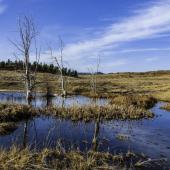
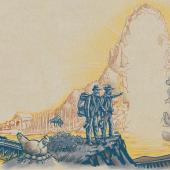
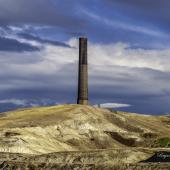
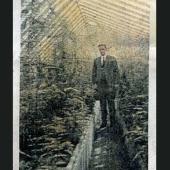
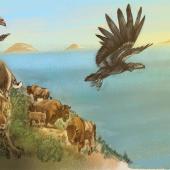
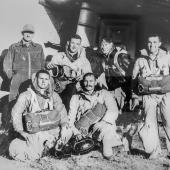

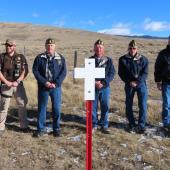



Leave a Comment Here